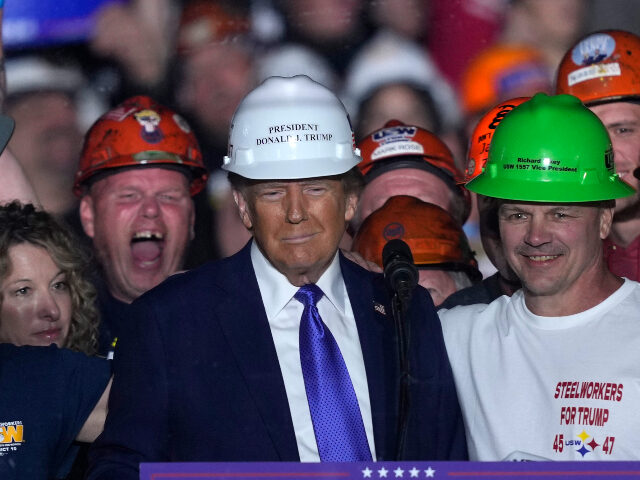Massachusetts Working Class Dramatically Shifted for Trump, Dems Wondering Why
 Matt Rourke/AP
Matt Rourke/AP
Democrats are trying to figure out how they lost massive numbers of working class voters in historically blue areas across the country — but the evidence shows that the party simply left them behind.
USA Today interviewed multiple former Democrats in the liberal enclave of Massachusetts who cast their votes for President-elect Donald Trump in the recent election, and their main reason was the economy.
Mark Callahan, a 67-year-old from Lynn, a suburb of Boston, voted Democrat in nearly every presidential election prior to this year. Now, he said he hopes that Trump will “make a change.”
“Everything was too expensive. What we had wasn’t working,” Callahan told the outlet.
“The working-class people. They just forgot about us,” Jim Gigliello, a 48-year-old from Revere, said.
“It just didn’t seem like any of the politicians had anything that would benefit us,” Curran Bennett, 28, said.
Gigliello pointed to the fatigue that voters got with the focus on social justice issues instead of “larger issues like the economy.”
Massachusetts, which is so blue that it was the only U.S. state to vote for 1972 Democrat candidate George McGovern over then-President Richard Nixon (R), experienced “one of the most profound rightward shifts of any state” this year, according to USA Today.
Despite Vice President Kamala Harris winning the state, diverse communities of working class people became new Trump voters in droves.
Garrett Dash Nelson, head curator at the Leventhal Map & Education Center at Boston Public Library and a historical geographer who analyzes political ideologies, used the election results and census data to study the state’s shift.
“No matter what method he used to define class, the results were similar,” USA Today reported.
His analysis found that communities where more people work in the service industry, have lower median incomes, and have less higher education “generally saw a larger uptick in votes for Trump than more wealthy, white-collar areas.”
“Massachusetts saw a pattern that happened all across the country,” Dash Nelson said. “The reality is that the pattern of Republican gains being concentrated primarily in working class, oftentimes diverse working-class municipalities, holds up.”
Lawrence, a town that is 80 percent Latino and has a median household income of $53,977 — about half of the state’s overall average of around $100,000 — saw a staggering 46-percent rise in votes for Trump.
Springfield, where over a quarter of residents work blue-collar jobs, experienced a 16-percent rise in Trump votes.
Lynn, where just 15 percent of residents have a college degree compared to nearly half of Massachusetts residents overall, saw an 11-percent jump for Trump.
Rep. Seth Moulton (D-MA), whose district encompasses Lynn, recently came under fire from his own party and is facing calls to resign after telling the New York Times that Democrats have made a mistake by championing transgender athletes in women’s sports.
“The feeling is that Republicans are focused more on the urgent challenges people face,” Moulton told USA Today.
Arguing that the attempts to cancel him over his opinion that males should not compete against females proves his point, he said, “A lot of Democrats have taken on an incredibly condescending tone and treated everybody who disagrees with them … as not only wrong, but as bad people.”
“We’ve got to do a lot less preaching and a lot more listening,” Moulton added.
“There is a simmering distrust among many Americans of the Democratic Party. Even if they like our policies better, they just don’t trust us to take America’s challenges seriously enough.”
Source link

